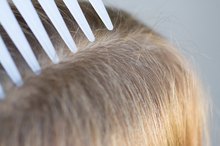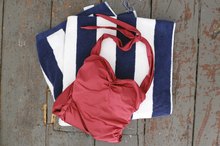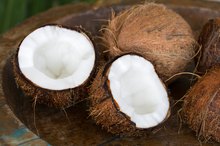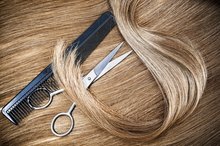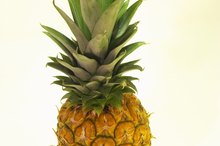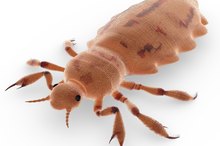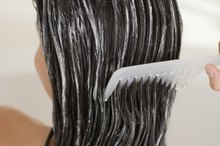How to Kill Head Lice With Salt Water
The head louse is a small, wingless parasitic insect that can establish and maintain themselves on human hair. They feed on very small amounts of blood that they draw from your scalp. Although not dangerous, their presence can cause discomfort in the form of constant itching and redness. Head lice cannot jump or hop, but they can crawl very quickly 3. They are usually spread by head-to-head contact such as sharing a bed with an infected person. They seldom spread through the sharing of personal items such as combs, brushes or toilet seats. By employing all the methods below, you can effectively eliminate head lice with salt water 3.
Wet your hair. Fill a large basin or pail with warm water. Pour water on your hair either with your hands or a scooper such as a measuring cup. Wetting your hair will help moisturize it and prepare it for the salt solution. When wetting your hair, do so over a sink.
How to Kill Tick Eggs
Learn More
Add one pound of Epsom salts to the basin and stir. Add more water if necessary should you happen to put too much salt for over saturation. Keep stirring the salt until it dissolves.
Bend over the sink and apply the solution. Ensure you do so carefully and slowly, and avoid contact with the eyes.
How to Clean Hair Brushes & Lice
Learn More
Massage your head while pouring the salt water for five minutes. Wait about two minutes for the salt solution to do its work against the lice 3. Rinse your hair with fresh water after massaging.
Comb out the dead lice with a lice comb or other fine comb. Rinse your hair out with water again. Dry your hair with a towel afterward.
Related Articles
References
- "Medical Diagnosis and Treatment"; Stephen J. McPhee, MD; 2006
- "The Complete Book of Ayurvedic Home Remedies"; Vasant Lad; 1999
- About Head Lice
- InformedHealth.org [Internet]. Cologne, Germany: Institute for Quality and Efficiency in Health Care (IQWiG); 2006-. Head lice: Overview. 2008 Mar 5 [Updated 2018 Dec 13].Available from: https://www.ncbi.nlm.nih.gov/books/NBK279329/
- Rassami W, Soonwera M. Epidemiology of pediculosis capitis among schoolchildren in the eastern area of Bangkok, Thailand. Asian Pac J Trop Biomed. 2012;2(11):901–904. doi:10.1016/S2221-1691(12)60250-0
- van der Wouden JC, Klootwijk T, Le Cleach L, et al. Interventions for treating head lice. Cochrane Database Syst Rev. 2018;2018(5):CD009321. Published 2018 May 22. doi:10.1002/14651858.CD009321.pub2
- Bin Saif GA, Ericson ME, Yosipovitch G. The itchy scalp--scratching for an explanation. Exp Dermatol. 2011;20(12):959–968. doi:10.1111/j.1600-0625.2011.01389.x
- Head lice infestations: A clinical update. Paediatr Child Health. 2004;9(9):647–657. doi:10.1093/pch/9.9.647
- Izri A, Chosidow O. Efficacy of machine laundering to eradicate head lice: recommendations to decontaminate washable clothes, linens, and fomites. Clin Infect Dis. 2006;42(2):e9–e10. doi:10.1086/499105
- Değerli S, Malatyalı E, Mumcuoğlu KY. Head lice prevalence and associated factors in two boarding schools in Sivas. Turkiye Parazitol Derg. 2013;37(1):32–35. doi:10.5152/tpd.2013.08
- Greive KA, Barnes TM. In vitro comparison of four treatments which discourage infestation by head lice. Parasitol Res. 2012;110(5):1695–1699. doi:10.1007/s00436-011-2687-7
- Devore CD, Schutze GE. Head lice. Pediatrics. 2015;135(5):e1355-65.
- Devore CD, Schutze GE; Council on School Health and Committee on Infectious Diseases, American Academy of Pediatrics. Head lice. Pediatrics. 2015 May;135(5):e1355-65. doi:10.1542/peds.2015-0746
Writer Bio
Frank Dioso is a trained medical technologist working for prominent research institutions such as Quest Diagnostics and California Clinical Trials. He has, for many years, ghostwritten clinical trial reports for confidential pharmaceutical drugs and is currently contributing his clinical laboratory science knowledge to online how-to articles.

